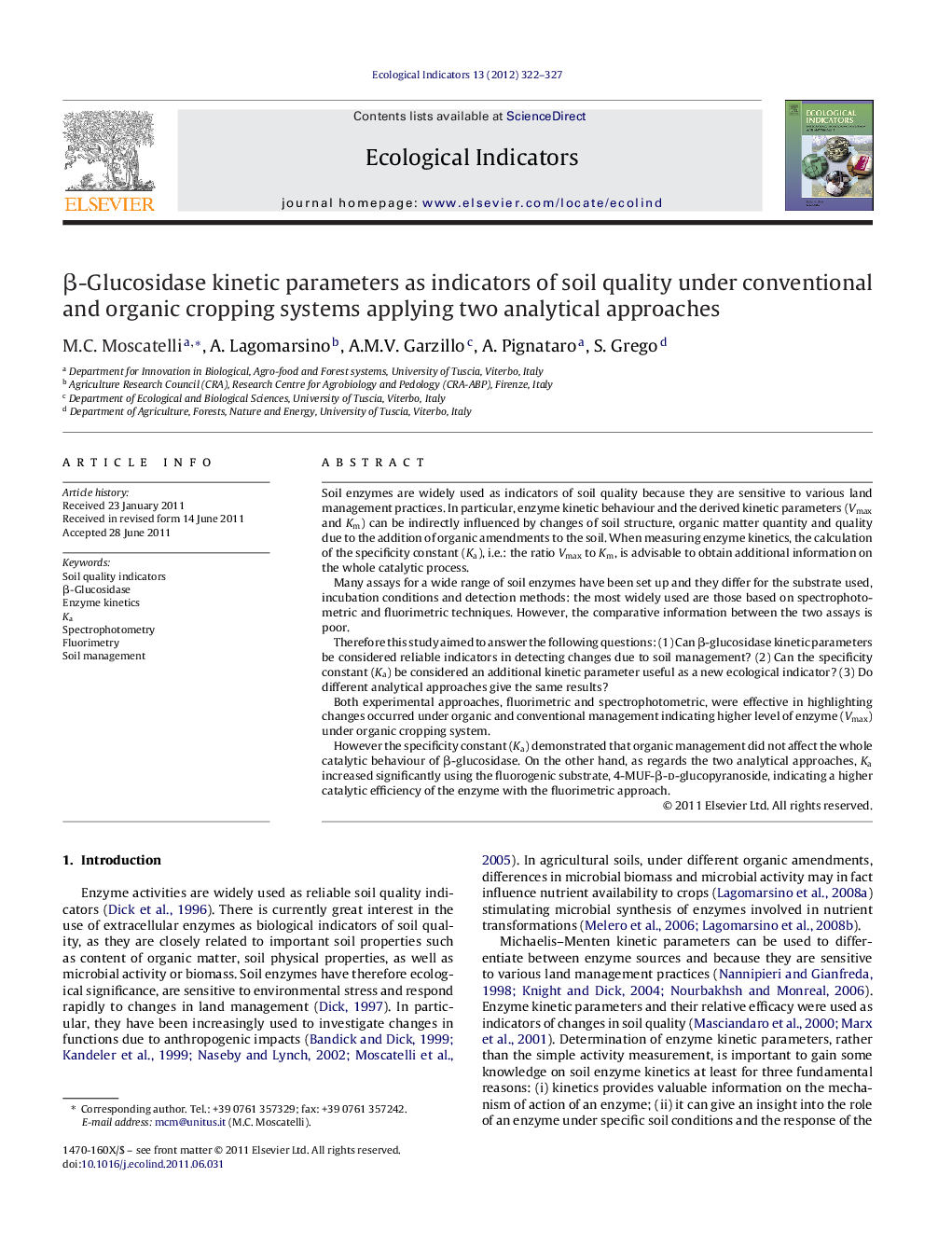| Article ID | Journal | Published Year | Pages | File Type |
|---|---|---|---|---|
| 4374027 | Ecological Indicators | 2012 | 6 Pages |
Soil enzymes are widely used as indicators of soil quality because they are sensitive to various land management practices. In particular, enzyme kinetic behaviour and the derived kinetic parameters (Vmax and Km) can be indirectly influenced by changes of soil structure, organic matter quantity and quality due to the addition of organic amendments to the soil. When measuring enzyme kinetics, the calculation of the specificity constant (Ka), i.e.: the ratio Vmax to Km, is advisable to obtain additional information on the whole catalytic process.Many assays for a wide range of soil enzymes have been set up and they differ for the substrate used, incubation conditions and detection methods: the most widely used are those based on spectrophotometric and fluorimetric techniques. However, the comparative information between the two assays is poor.Therefore this study aimed to answer the following questions: (1) Can β-glucosidase kinetic parameters be considered reliable indicators in detecting changes due to soil management? (2) Can the specificity constant (Ka) be considered an additional kinetic parameter useful as a new ecological indicator? (3) Do different analytical approaches give the same results?Both experimental approaches, fluorimetric and spectrophotometric, were effective in highlighting changes occurred under organic and conventional management indicating higher level of enzyme (Vmax) under organic cropping system.However the specificity constant (Ka) demonstrated that organic management did not affect the whole catalytic behaviour of β-glucosidase. On the other hand, as regards the two analytical approaches, Ka increased significantly using the fluorogenic substrate, 4-MUF-β-d-glucopyranoside, indicating a higher catalytic efficiency of the enzyme with the fluorimetric approach.
► Soil β-glucosidase kinetics as indicator of soil quality. ► Ka the specificity constant as a new ecological indicator. ► Organic amendment increased β-glucosidase Vmax but not the Ka. ► Two methodological approaches were tested: fluorimetry and spectrophotometry. ► Both methods were effective in discriminating soil treatments. ► The fluorogenic substrate showed higher enzyme catalytic efficiency.
